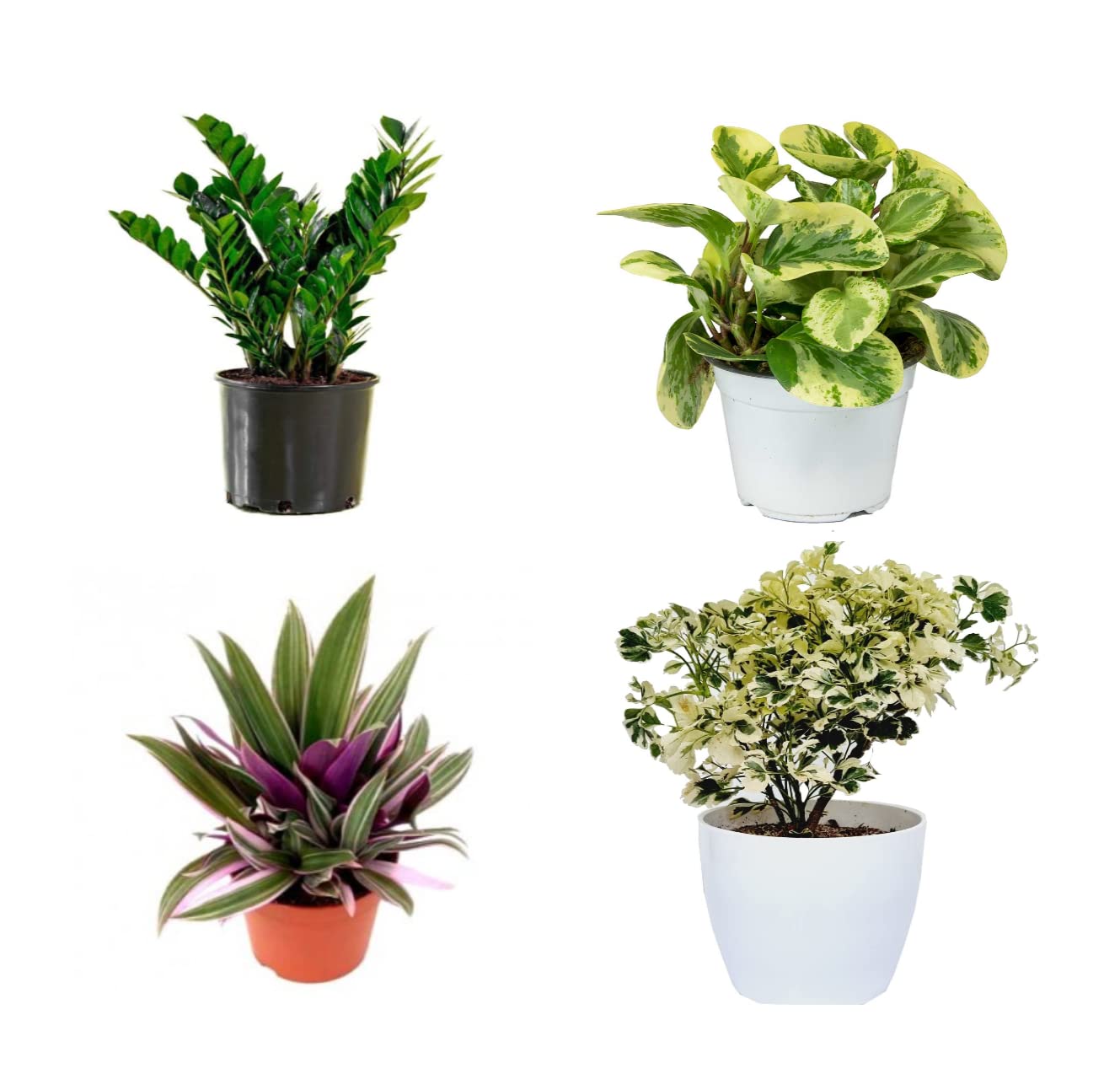Indoor gardening is a great way to bring the beauty of nature indoors. However, it is not an easy aspect of indoor gardening to give your plants enough light. Your plants will not grow properly and may even die without enough light.
They need a certain amount of light to grow up and stay alive. If your room does not have enough natural light, you’ll need to use artificial lighting as a supplement. With a little planning, you can easily provide your indoor plants with the right amount of light. Meanwhile, you can create a healthy and thriving indoor garden by following some efficient lighting Tips for a Healthy Indoor Garden.
How Right Spectrum of Light Can Affect Plants
Plants need light to grow. The right spectrum of light can significantly impact the growth, yield, and quality of your plants.
- Blue light helps establish a healthy plant root and stem structure during the vegetative stage.
- Red light promotes flowering, fruit, leaf growth, and stem elongation.
- Full spectrum light is the most versatile option for all lighting needs.
Importance of the right spectrum of light
The right spectrum of light can affect the pants in various ways. So, roll down to get more information about the importance of the right spectrum of light for your indoor garden:
- Photosynthesis: Plants use light to convert carbon dioxide and water into oxygen and energy, a process called photosynthesis. This process is essential for plant growth and survival.
- Yield and quality: The right spectrum of light can also help increase the yield and quality of fruits and vegetables. For example, tomatoes grows under red light contain higher amounts of vitamin C than tomatoes grown under white light.
- Stress tolerance: The right light spectrum can help plants tolerate stress from heat, cold, and drought.
- Growth: The right spectrum of light can help plants grow faster and stronger. Plants need different wavelengths of light for different stages of growth. For example, seedlings need more blue light than mature plants.
- Flowering and Fruiting: The right spectrum of light can help to grow plant flowers, and fruits. Light, temperature, and the length of the day can affect these processes.
- Taste and nutrition: The right spectrum of light can also affect the taste and nutrition of fruits and vegetables. For example, tomatoes have a higher concentration of lycopene under red light, like vitamin C.
You can create a thriving environment for your plants and achieve impressive results by installing lighting in your indoor garden in a proper way. Suppose you need any assistance with installations or repairs for lighting your indoor gardens. In that case, you can reach out to a professional electrician in Columbia, SC, for a safe and reliable solution.
Types of Indoor Lighting Used for gardening
There are different types of lighting used inside the house. The following is a list of some of the most popular forms of indoor lighting that are used for gardening:
1) Fluorescent lights: Fluorescent lights are one of the popular choices for lighting in an indoor garden. They are energy-efficient and produce a full spectrum of light, which helps in the growth of plants.
2) LED lights: LED lights are becoming popular for indoor gardens in recent years. They are even more energy-efficient than fluorescent lights. These lights can last for many years.
3) Incandescent lights: These lights are the least expensive type of bulb than other types and can save energy. They should only be used for small indoor gardens or accent lighting.
4) HID lights: HID lights, such as metal halide and high-pressure sodium lights, are the most powerful grow lights. They are often used for growing flowering plants.
10 Efficient Lighting Tips for Indoor Gardening
Indoor gardening is a wonderful way to enjoy the benefits of fresh plants year-round. However, it depends on the amount and quality of lightning. The following ten efficient gardening tips for lighting will help you optimize your indoor gardening setup and ensure the healthy growth of your plants. So, let’s dive in!
1. Assess Your Natural Light
Before you buy artificial lights for your plants, it is important first to assess the natural light conditions in your home. You should look for areas where sunlight enters for most of the day and determine the intensity and duration of light exposure. This will help you learn which plants will flourish in each place and how to position your plants perfectly for their optimal growth.
2. Determine the Right Amount of Light for Your Plants
Different plants need different amounts of light. Some plants like full sun, like cacti and succulents. Others, like ferns and calatheas do not like full sun, rather, they like some shade. It is important to research the light requirements of your specific plant species and provide the appropriate amount of light accordingly.
3. Position Your Plants Correctly
You should place the plants in the correct order so that they get the maximum amount of light. Plants that need a lot of light should be placed near windows or in areas with abundant natural light. On the other hand, you can place the plants further away that prefer indirect light. When arranging your indoor garden, be mindful of the direction and intensity of light to create the optimal environment for each plant.
4. Use Reflective Surfaces
To get the most out of artificial lighting, use reflective surfaces wisely. Mirrors, aluminum foil, or reflective films can redirect and amplify light so that more of it reaches your plants. Place these reflective surfaces near your light sources or behind your plants to create a reflective environment that enhances light distribution.
5. Install Timers for Automatic Lighting
Plants need consistent light exposure to grow healthy. You can use timers to automate your lighting system. It ensures that your plants receive the right amount of light every day. A timer can help you to set a specific schedule. It will automatically turn the lights on and off, even when you’re away.
6. Use LED Grow Lights
LED grow lights are becoming popular among indoor gardeners. They are energy-efficient and can provide plants with the specific light wavelengths they need to thrive. LED lights emit targeted wavelengths that can be tailored to the different stages of plant growth. For example, blue light promotes vegetative growth, while red light stimulates flowering and fruiting. Investing in high-quality LED grow lights can significantly improve your indoor gardening success.
7. Choose the Right Color Temperature
Color temperature can tell you whether a light source is warm or cool. A higher Kelvin number indicates cooler light, whereas a lower number indicates warmer light. So, different color temperatures have different effects on plant growth.
- Cool white light with a higher color temperature (5000-6500K) promotes vegetative growth. This is the type of light that is most similar to natural sunlight. It helps plants to grow taller and bushier.
- Warm white light with a lower color temperature (2700-3000K) encourages flowering and fruiting. This type of light has more red and orange tones, which plants use to produce flowers and fruits.
So, understanding the impact of color temperature will allow you to choose the right lighting for your specific plant needs.
8. Consider the Light Cycle for Different Plant Stages
Indoor plants grow just like outdoor plants. You should provide them with the right amount of light for each stage of growth to help them grow properly.
During the vegetative stage, plants need more light, around 14-18 hours per day. As they transition to the flowering stage, they need less light, around 12 hours or less. This change in the light cycle helps the plants to bloom and produce fruit. By adjusting the light cycle to the specific growth stage, you can ensure that your indoor plants thrive.
9. Avoid Light Burn
Adequate light is essential for plant growth, but it is also important to prevent light burn. Light burn happens when plants are exposed are placed too close to the light source. This can damage the plants and reduce their yield. To prevent light burn, it is important to monitor your plants regularly and adjust the light intensity or distance as needed.
10. Use Appropriate Distance and Height for Your Lighting Setup
The distance and height of your lighting setup can affect the amount of light that reaches your plants. If your lights are too high, your plants may not receive enough light. If your lights are too low, your plants may experience light burns.
Common Mistakes to Avoid
Proper lighting plays an important role in maintaining the growth of your plants. However, there are some common mistakes that many gardeners make when lighting their indoor gardens.
- Not giving enough lighting to your plants: Plants need light to photosynthesize and produce food. If your plants don’t get adequate light, they can become weak. Their leaves may turn yellow.
- Giving too much lighting to your plants: Too much light can also harm plants. It can cause their leaves to burn, and it can also stress them out.
- Not using the right type or spectrum of light: Different plants need different types of light. Some plants require a broad light spectrum, while others may survive on a blue or red light.
- Poor positioning of lighting: The position of your lights is also important. If the lights are too close to your plants, they can burn them. Your plants will only get enough light if they’re close enough.
Benefits of Proper Lighting
Proper lighting is essential for plant growth and health. There are many benefits to providing your plants with proper lighting. Some of these benefits include:
- Enhanced growth: Plants that receive adequate light will grow faster and healthier than those that do not. This is because plants can’t make food without light. Photosynthesis is the process by which plants make food.
- Higher yields: Plants that receive proper lighting will produce more flowers, fruits, and vegetables. This is because light helps to stimulate flowering and fruiting.
- More vibrant colors: Plants that receive proper lighting will have brighter, more vibrant colors. This is because light helps to stimulate the production of chlorophyll. It is the pigment that gives plants their green color.
- Fewer diseases and pests: Plants that receive proper lighting are less susceptible to diseases and pests. This is because light helps to strengthen the plant’s immune system.
If you want your plants to grow strong and healthy, you need to ensure that they have enough light. However, the amount of light will need a plant that varies on the type of plant, the season, and the climate. But on an average most plants will need at least six hours of direct sunlight per day.
Conclusion
Growing plants indoors can be a satisfying and meaningful hobby that lets you bring a touch of nature into your home. It can be a fun experience which can also be a challenge. Giving your plants the right light is essential for successful indoor gardening. If your plants don’t get enough light, they won’t be able to make food for themselves, and they will eventually start to weaken. You can provide your indoor plants with the best lighting and help them to grow healthy and strong by following these tips.




Be First to Comment